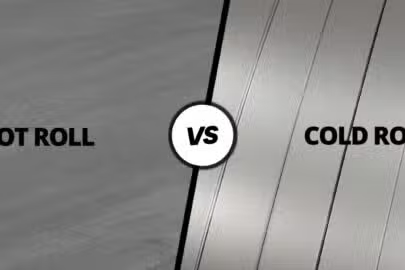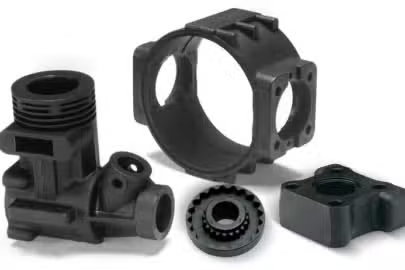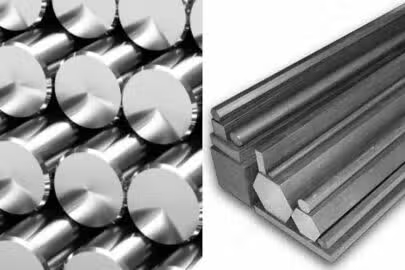Copper is an early metal used by mankind. It remains one of the industry’s oldest metals, with an exceptionally long lifespan. Copper plays a critical role in everyday life. It’s used for electrical wire, automobiles, pipes & tubes, and other products having all kinds of shapes; it inspires innovation, bringing us ever closer to the future.
Of the metals commonly used in mechanical engineering, copper and its alloys are among the most versatile. Its exceptional characteristics – high conductivity, strength, machinability, and corrosion resistance – make it compatible with different applications. Nevertheless, you can further enrich these properties by alloying elements and changes in the manufacturing process.
The following article presents a comprehensive introduction to copper: what it is, its various grades of quality, advantages and disadvantages in manufacture, and applications. You’ll also learn how to choose a copper material for your project.

A Brief Overview of Copper
Copper is one of the few metals that dates back to 8,700 BC following the discovery of a copper pendant in Northern Iraq (Mesopotamia). It is presumed to be the earliest object made of copper. Copper has played a significant role in many ancient civilizations, and the widely held belief is that the Mesopotamians discovered copper.
A time between 5,500 BC and 4,000 BC was the Copper Age, usually called the “Chalcolithic Age.” It originated from the Greek words “Chalkos” (copper) and “lithos” (rock). However, copper has the Latin name “Cuprum,” and this Latin name originated from the island of Cyprus, which was the primary source of copper material in ancient times. Cuprum or copper was the “metal of Cyprus.”

What Is Copper?
Copper is a naturally occurring and highly recyclable element. It has the symbol “Cu” and atomic number 29 on the periodic table of elements. Copper or Cu element belong in the the red metals category together with brass and bronze. Copper element is a non-ferrous and highly machinable material, making it easy to fabricate different parts.
Copper metal is applicable in several industries for various purposes since it exhibits high electrical and thermal conductivity. Moreover, copper is widely used in seawater environments due to its corrosion-resistant properties.
Properties of Copper
Copper offers vast benefits over other metals due to its unique properties. Below are typical copper material properties:
- Appearance: Copper’s reddish-brown color has a pinkish-orange coloration that differentiates it from bronze metal. Pure copper material usually has a pink color before oxidation. However, readily available copper has the standard reddish-brown color due to the rapid formation of brown copper oxide.
- Workability: Copper is easy to fabricate because of its excellent malleability and ductility. Copper and its alloys can be rolled, hammered, and drawn without breaking. Copper can be cold-worked in its purest form. However, you may have to hot-work the metal if it contains alloying agents like lead or zinc.
- Strength: Copper is a tough metal, although not the strongest, compared to brass or bronze. However, it offers good metal strength properties as it won’t break or shatter easily. Copper possesses a yield strength of 33.3 Mpa and 210 Mpa tensile strength.
- Corrosion Resistance: Copper metal creates a thin oxide film on its surface. Hence, products made with copper alloys are effectively immune to corrosive elements as long as the oxide layer remains intact.
- Electrical and Thermal Conductivity: Copper’s high electrical and thermal conductivity is one of its most essential properties. Copper is so conductive that it makes approximately 95% of all the cores of electrical wires, transformers, and other conductors. Although silver offers more electrical conduct than copper, it exhibits poor heat handling. Hence, copper is the most suitable metal for electrical applications.

How Is Copper Produced?
Copper can be produced through different procedures. Here are the typical steps:
Mining
Raw copper is found over the Earth’s surface as an ore containing other metals like lead and zinc or as a mineral. Copper ores mining usually occurs in large open pits or underground stepped holes. These open pit mines are dug deeper into the Earth’s crust using explosives to blast the rock gradually. The resulting boulders are moved for further processing into smaller pieces. About 90% of copper materials mined are from open-pit mining.
Extraction and Purification
There are two major purification processes based on the two common copper ore types. Oxide ores are extracted using a hydrometallurgical process. The crushed ore is collected, and an acid-leaching solution is spread slowly through the heap, creating a pregnant leach solution.
The pregnant leach solution is passed through a solvent extraction process, concentrating the copper in the solution. Then, this solution is sent to electrowinning, where the solid copper is deposited using electricity.
On the other hand, sulfide ores are purified through a pyrometallurgical process. The extraction occurs by froth flotation and thickening based on the particle’s density. Hence, the smelter is used to form the raw copper, which is then purified further by electrorefining.
Alloying
Copper alloys are produced by first melting the alloying agents and then melting the copper to be added. The hot liquid mixture is then cast into billets, rods, ingots, or cakes and allowed to cool and solidify uniformly.
Electrorefining
Electrorefining is a copper manufacturing process that involves the electrolytic dissolving of impure copper metal into solution. An electrical current passes through the solution to electrochemically deposit pure copper on an electrode. Consequently, this extracts impurities from the copper for higher purity. However, this process is costly due to its extremely high electrical demand.
Various Copper Grades Available
Copper is available in various grades, each with distinct properties and benefits. As a result, it is critical to know the different copper grades and properties to determine the suitable one for your project. We will discuss the standard grades of copper available below:
Pure Copper
These coppers exist in the purest forms because they contain approximately 0.7% impurities. Pure coppers are soft and highly malleable than those with additives. Hence, they are widely used for different purposes across industries, especially precision electrical components. Copper material suppliers sometimes add small portions of other elements to pure copper to boost its mechanical properties. However, pure copper grades have UNS numbers ranging from C10100 to C13000.

Free-Machining Copper
Free-machining coppers have excellent machinability. Hence, manufacturers often use them for several CNC machining tasks. Copper metals in this grade contain sulfur and telluride as their alloying elements. Free machining copper metals are well-suited for producing electrical systems components, soldering iron tips, and tips of welding torches. The UNS-assigned number for this grade varies based on the added alloying agent. C14700 is the UNS number for sulfur, while C14500 is for telluride.
Nickel Silver
This grade of copper is not made with any silver element, regardless of its given name. This copper alloy material contains about 9 to 30 % concentration of nickel and about 65% copper concentration. On the other hand, the concentration of zinc varies as the nickel content changes.
However, the higher the nickel concentration, the higher the copper alloy’s corrosion resistance at the expense of its malleability. Copper alloy grade has UNS numbers C73500 to C79999. Architectural fittings, musical instrument keys, and cutlery are typical applications of nickel silver.

Electrolytic Copper
Copper alloys in this grade are created through electrolysis within a solution to expel impurities. They are high-purity copper grade with 100% electrical conductivity and workability. As such, it is compatible with cold and hot working processes. Electrolytic copper grades have a UNS assigned number or C11000, and they comprise less than 50 ppm of metallic impurities. Typical applications of these copper metals include cables, windings, bus bars, and wires.
Oxygen-Free Copper
This copper grade contains at least 99.99% copper and is melted and heated to a melting point under a granulated graphite bath to remove oxygen. Oxygen-free coppers are the purest copper grade obtainable, with minimal impurities as a result of the non-oxidizing conditions.
They exhibit remarkably high heat and electrical conductivity. Hence, these copper metals are suitable for machining parts that require high electrical conductivity, corrosion resistance, or other copper properties. The copper grades are assigned the UNS numbers C10100 and C10200.
Copper-Nickel Alloys
Copper-nickel alloys contain 1.5 to 45% nickel as an alloying element. The added nickel alloy increases its mechanical properties like hardness and strength. However, these alloys become complex to machine because the nickel content reduces the material’s ductility and machinability.
This grade of copper offers better corrosion resistance properties for both copper and nickel. Hence, they are widely used to make products like heat sinks, cooling systems, and coins. These copper grades are assigned the UNS numbers C70000 to C73499.
Pros and Cons of Copper in Manufacturing
Because of its numerous advantages, copper is used in many engineering and decorative matters. Here are some of the benefits of copper in manufacturing:
- Because copper is recyclable and environmentally friendly, more than 80 % of the mined and manufactured metal can still be used.
- Copper alloy material has anti-bacterial properties so it can be used for parts like medical tools and components.
- Copper alloy material is soft and convenient to work with. Machinists bend and stretch the copper alloy material into various shapes of different sizes without cracking.
- It is an ideal material for non-magnetic applications such as military and defense.
- Copper material is cheaper and more machinable than metals such as titanium.
- Copper properties such as corrosion resistance make it ideal for making parts and components for different applications.
Despite the vast benefits of copper alloys in manufacturing, the material has certain disadvantages. Here are some of the disadvantages of using copper:
- Copper has a higher level of toxicity. Hence, it is unsuitable for applications like in utensils where regular ingestion of copper could occur.
- Copper alloys have a limited life span when exposed to air because oxidation occurs at high temperatures.
- This metal possesses a shock risk compared to fiber optics’ alternative signal transmission technology.
- The cost of copper material is higher than that of potential alternative materials like plastic (water piping) or aluminum (electrical cabling).
- It is relatively heavier than other materials like aluminum. Hence, it may be unsuitable for making overhead wires.
Applications of Copper Parts
Copper parts have a broad range of applications in every society. We will discuss some of the common uses of copper in different industries:
Architecture
Copper is a suitable metal for making architectural elements due to its aesthetically appealing appearance. Typical copper uses in architecture include roofing, wall cladding, rainwater downspouts, and gutters.
Coinage

Copper has been used to make coins over the years since its discovery. It is highly durable and malleable; hence, manufacturers can stamp it easily, and it can survive in circulation. Also, its corrosion resistance and antimicrobial properties make it suitable for this purpose.
Plumbing
Since copper metal exhibits good corrosion resistance, it is often used to make tubing for domestic water piping in households.
Renewable Energy
There is an extensive range of uses for copper parts in the renewable energy market. For instance, engineers use copper to make connections and cabling in solar photovoltaic panels. Likewise, copper parts are used within the generating turbines in wind turbines.
Electronics

The high electrical conductivity of copper makes it applicable in making electronics and electrical wiring. Unlike aluminum, copper metal allows currents to be carried on smaller cross-sections. As a result, it will enable the use of less bulk material and the creation of smaller components.
Transportation
Automobile engineers and manufacturers use copper to make components such as electrical cabling for complex electronics in modern vehicles since it offers excellent electrical conductivity. More so, there has been a significant increase in the amounts of copper material used for elements like electric motors since the demand for electric cars in market share continues to grow. Other copper parts in the transportation industry include oil coolers and radiators.
Choosing the Right Copper Grade for Your Projects
Choosing the suitable copper grade for your machining projects can be challenging, considering the abundance of copper alloys available. However, selecting the copper material with properties that match your intended application’s requirements is crucial. Here are some factors to consider when choosing a copper grade:
Non-Corrosive Property
The copper material chosen is of particular importance in the fabrication of parts for marine or seawater applications owing to its corrosion resistance characteristics. Thus, it is essential to note this characteristic when choosing a suitable alloy for machining in rapid prototypes and final products being used here. Bronze alloy is a copper material that is particularly resistant to corrosion.
General Applications
Because copper has a relatively wide range of properties, it is well suited to general-purpose applications. But in fact, these applications require no one individual property in any case; it is simply necessary to use a copper grade with the perfect combination of all its properties. Thus, the grade of copper chosen should be economical and malleable. It must also be machinable easily.

Ductility and Machinability
These are all essential properties to evaluate when choosing an appropriate copper alloy for CNC machining of copper. However, it would be better to assess the copper grades carefully since they possess different degrees of both. Therefore, the desired result of copper CNC machining will decide which grade of copper to use for your project.
Conclusion
Because of its broad range, relatively wide availability, and low price per ton, the versatility of copper makes it an excellent metal for engineering purposes. As a result, knowing about the different properties and grades of copper material allows you to choose an alloy suited for your project. But project requirements will decide the suitable copper alloy material for your intended products. We have also provided some practical hints to help you select a suitable grade of copper for your machining project.
If you run into difficulties trying to select a suitable copper alloy for your project, Zintilon is the expert you want on your side. We offer professional guidance on material selection, sheet metal fabrication, and machining matching diverse applications. We take care of all your machining complexities. Submit your CAD files now for immediate quotes!
FAQs
Does Copper Material Rust?
It doesn’t have iron compounds, so technically, copper cannot rust. But copper material is naturally limited to tarnish over time due to unavoidable surface corrosion.
Is Copper a Heavy Metal?
Because copper’s density is relatively high, it can be considered a heavy metal. Its density is 8930 kg/cu.m, heavier than other metals such as bronze and brass (considerably lighter).
Does Copper Spoil Foods?
Well-coated and lined copper material is safe for food contact. But unlined copper cookware reacts to acidic foods. Thus, it is imperative to take precautions in such cases.
Great, Together



